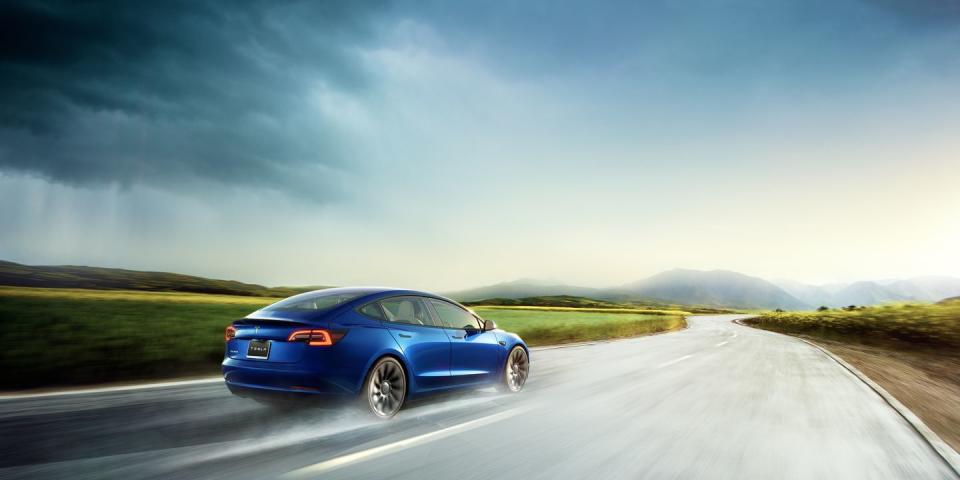Tesla Model 3, Model Y Got New Battery Chemistry, and Here's What It Means

The news emerged in late August: Tesla was offering a chance for electric-car buyers who'd ordered a Model 3 Standard Range+ to get their car sooner. That same month, it emerged that orders placed for less expensive Model 3s wouldn't be filled until 2022. And the same went as well for Standard Range Tesla Model Y versions. (Last month, Tesla renamed the Standard Range models, which are now simply called Rear Wheel Drive.)
The new option would allow Tesla to deliver its least expensive Model 3 cars more quickly, at a penalty of just 10 miles on EPA range ratings: 253 miles vs 263 miles—for the same sticker price. In turn, it could presumably shift more of its traditional battery packs to the hot-selling Model Y compact crossover.
Until this summer, all Model 3s and Model Ys sold in North America had been powered by batteries with thousands of small cylindrical cells, using a nickel-cobalt-aluminum (or NCA) chemistry, from Tesla's Nevada Gigafactory. The new pack not only uses a different chemistry known as lithium-iron-phosphate (or LiFP), but the cells themselves were prismatic—meaning the contents of the battery casing were entirely different.
The substitute pack is hardly an unknown quantity. Prismatic-cell battery packs are by far the most predominant in China. As analysts and Tesla owners noted, it's used in all Standard Range Tesla models built at the company's Shanghai factory. The China plant also exports lower-range Tesla models to Europe.
Tesla had forecast this shift during its Battery Day event in September, at which CEO Elon Musk suggested the company might use LiFP for lower-cost models. As it works to reduce the amount of expensive cobalt in its cells—as GM has done, with 70 percent less cobalt in the upcoming Ultium cells it jointly developed with LG Chem—it will attempt to put more nickel into future chemistry.
LiFP cells are less energy-dense than nickel- and cobalt-based cells, though the difference today is lower than it was a few years ago. And offsetting the 4 percent drop in EPA-rated range is the ability to charge LiFP batteries to 100 percent of usable capacity, whereas the recommendation for NCA packs is to recharge to no more than 90 percent under most circumstances. So for many buyers, the trade is pretty much a wash.

 Yahoo Autos
Yahoo Autos 